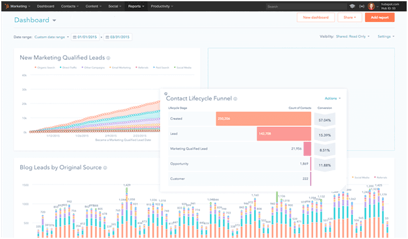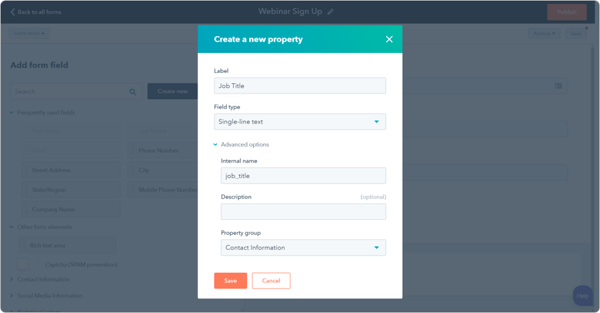-
MarTech Services
- HubSpot
- OneSignal
HubSpot
Technical Consulting
Partner with experts who understand your HubSpot systems and business needs inside out.
Revenue Operations
Drive revenue growth with tailored RevOps strategies designed for HubSpot users.
Hubspot Integration Services
Seamlessly integrate HubSpot with your existing tools to enhance operational efficiency.
Sales Enablement
Boost your sales team’s efficiency with focused HubSpot Sales Enablement solutions.
CRM Data Migration
Effortlessly migrate your CRM data to HubSpot with precision and support.
Hubspot Onboarding
Efficiently onboard clients to HubSpot, ensuring a smooth transition and rapid platform adoption.
HubSpot Administration
Maximize your HubSpot investment with expert management and optimisation tailored for HubSpot clients.
Marketing Assets Development
Develop, deploy, and manage digital assets, ensuring a fresh and engaging presence.
-
Solutions
-
Website Services
Website Development
We bring together expertise, creativity, and measurable results, making us the go-to choice for HubSpot website creation.
Website Migration
Our approach to website migration goes beyond a technical transfer; we prioritize a user-centric experience.
Website Maintenance
Optimize your online presence with effective, growth-driven websites focusing on nurturing website visitors, creating and deploying content, and tracking progress with precision.
Website Audit
Is your website performing at its peak? Our CMS Consultants are here to help you find out with our comprehensive Website Audit service.
-
Resources
-
Company
Clients
We have worked with clients from various industries across the globe, making our journey diverse and exciting.
Team
We put decades of experience where our mouth is. So what you get is market-tested and tried, not theory. We believe in plain speak, which we believe works better than jargon.
Solutions Partner
BlueOshan is not just a partner; we are among the most experienced and adept in the HubSpot ecosystem.
- Contact Us
What Are Topic Clusters?

Shantha Kumar
November 14, 2018

SEO is King
When you’re starting your own blog for your company, the first thing that you will do is speak to your SEO guy on what keywords you should write around. The nature of search engine optimization is that it’s always changing. To stay on top of your SEO game whilst blogging, it’s not enough to rely just on keywords anymore. With voice assistants like Google search assistant, Alexa, and Siri - users are now using full worded sentences in their searches. Before you would search:
Honda Civic price India
Now most users would search:
What is the price of a Honda Civic in India
Google themselves have moved away from traditional keyword searches to matching the phrases that users are searching with. Keywords are still there of course but the intent of the search is given more importance than keyword searches. Here are a couple of statistics we found on this awesome blog by HubSpot on the same topic:
1. 64% of all searches are more than 4 keywords are similar to long form conversational phrases. (source)
2. 20% of all searches are done by voice searches like Google voice assistant and Alexa. (source)
Get an audit of your website content to know where you stand, done by HubSpot certified experts!
Topics are the new Keywords!
Google’s search engine shows users the best possible and relevant content for their searches. So what Google now does is it looks for matches for complete conversational searches. In fact, Google even penalizes content that has irrelevant internal linking. Taking the example of the car, the Honda city car is a very specific car. But if you searched for sedans, for example, a broader category, Honda city prices may be listed in the search results. So, if you’re a blogger who writes about cars, Sedans would be the topic, and Honda City and other specific sedans would be a subtopic or part of the topic cluster. These topic clusters will keep your blogs organized and help Google index your website far better.

Sample: This is how HubSpot does their topic clusters.
In these topic clusters, HubSpot has further divided it by Pillar content, Cluster content and Hyperlinks.
 The design of each cluster ensures that the cluster content always hyperlinks back to the main pillar content. In this case, the pillar content or pillar page will broadly cover a topic and the cluster content should link back to keywords related to that topic in-depth.
The design of each cluster ensures that the cluster content always hyperlinks back to the main pillar content. In this case, the pillar content or pillar page will broadly cover a topic and the cluster content should link back to keywords related to that topic in-depth.
Example: In the case of “Sedans” - “Cars” would be the Pillar page. Since a pillar page on cars would cover all types of cars - sedans would link back to cars wherever it is mentioned in the pillar page. You can have multiple pillar pages that broadly cover topics - and have topic clusters around those pillar pages for detailed structured blogs. Not only is this SEO friendly, but Google will also be very happy with your new and improved blog architecture.

Shantha Kumar
kumar@blueoshan.comKumar is a Digital Marketer with 28 years of international experience. He has specific expertise in consulting, designing and implementing technology driven, Inbound Marketing Solutions. Aside from writing our blogs, he practices yoga, loves to trek, travel, and read biographies. He is believer of traditional Indian medicines and healing methods.



